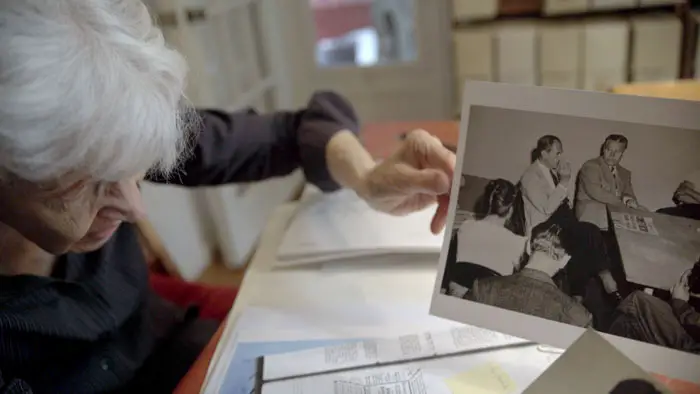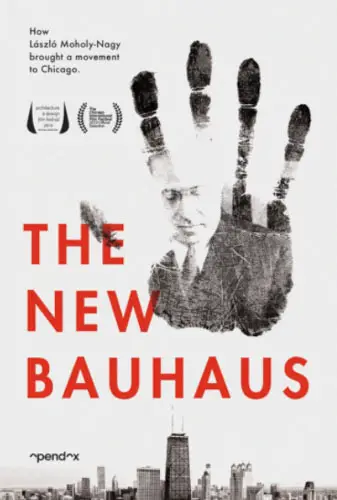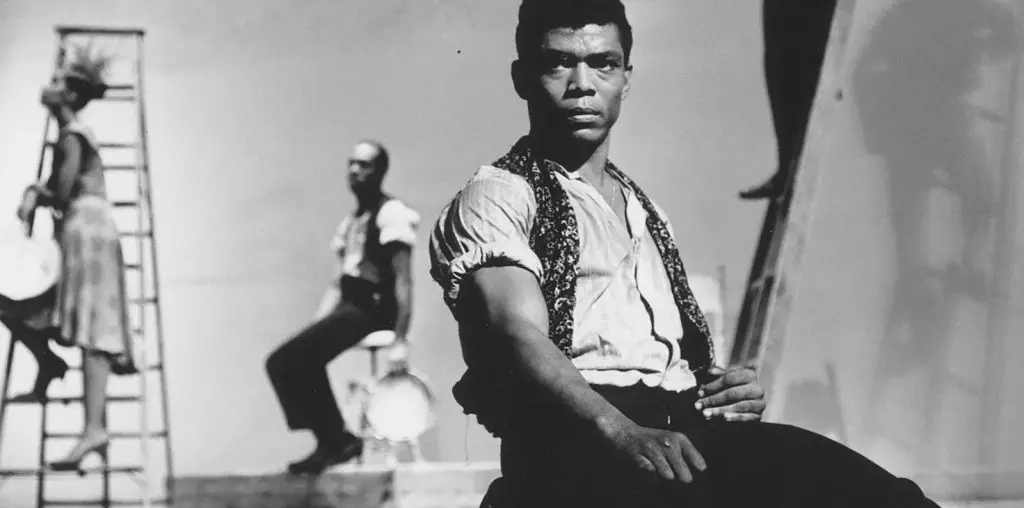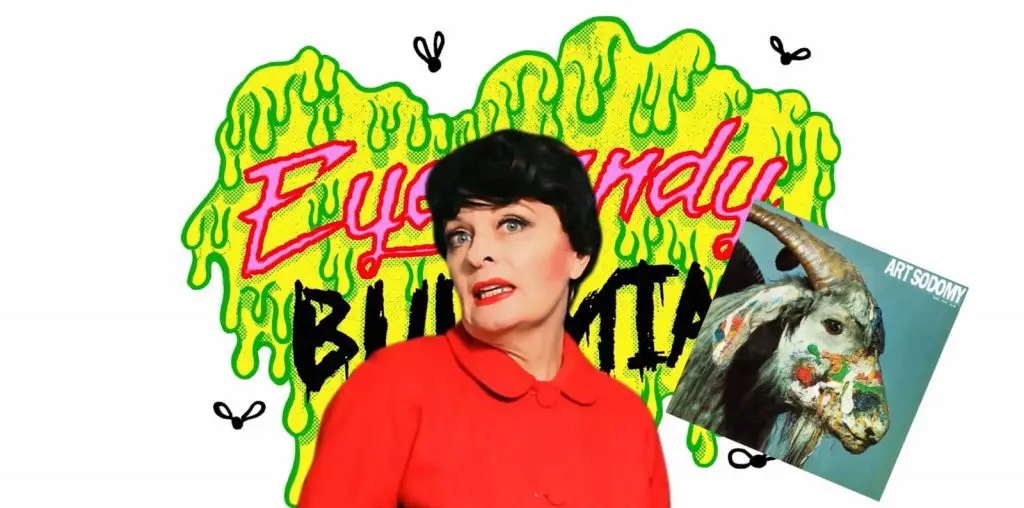
The New Bauhaus, co-written by Miranda Yousef and director Alysa Nahmias, is about avant-garde artist and educator Laszlo Moholy-Nagy. The documentary retraces the man’s journey by having art curator and historian Hans Ulrich Obrist read Moholy-Nagy’s own words and featuring interviews from various experts from the art world, his previous students, as well as the artist’s daughter Hattula, who is essential to the film. Thanks to their recollections and knowledge of Moholy-Nagy and his craft, coupled with an extensive collection of archival material, dynamic footage of the times he lived in, and a fun animated collage of his art, viewers get the full picture of the man and his many talents.
The trailblazing teacher/designer/photographer/mixed-media artist’s goal was “to live a happier, more productive life in modernity and [a] technologically infused environment.” In his 20s, while residing in Germany, he was asked to join a new art school whose goal was to destroy the barrier between every art. Moholy-Nagy could not refuse. This art school, Staatliches Bauhaus (commonly referred to as just Bauhaus), was the perfect avenue for Moholy-Nagy. The school’s impact on the world of art and architecture is still felt to this day. However, when the Nazis came to power, they viewed Bauhaus as “un-German” and full of “degenerate art,” so Moholy-Nagy (who was also of Jewish heritage) had to leave the country. He ended up in Chicago, where he founded The New Bauhaus American School of Design.
As the title suggests, The New Bauhaus goes through the history of the school and the reinvention of the movement. Laszlo’s grand ambition for the Illinois Institue of Technology, Institute of Design (IIT ID) was to create a place for everyone because he believed “everyone is talented,” thus, he aimed for the “kind of education that works toward the social betterment of all citizens through Art.” Hence, things were peculiar and informal. The curriculum did not necessarily include art history, but they did offer biology classes.

“…about avant-garde artist and educator Laszlo Moholy-Nagy.”
In his quest for utilitarianism, Moholy-Nagy strived to instigate his pupils’ passions to make things that “feel comfortable and practicable.” Moreover, he would tell his students to make things that people would buy, which seemed very apt for the post-war/post-depression era he was living in. This vision did not please everyone, from disciples to financiers alike, but in the end, the school lived up to its name, and its legacy still endures to this day thanks to the many innovations, inventions, and products designed by the alumni. The documentary provides evidence of the influential magnitude Moholy-Nagy still has on art and the world at large.
The New Bauhaus tells a fascinating story, as Moholy-Nagy’s art and life are worthy of being told. But, Nahmias tells it in a largely pedestrian fashion. This is a talking-heads documentary, make no mistake. However, there are moments of style that break through and enliven the proceedings (the aforementioned collage for one). Plus, the focus on the art, and Moholy-Nagy’s daughter specifically, brings the production to a very human and relatable level.
The New Bauhaus opens by making viewers question why we are not thinking of Laszlo Moholy-Nagy when we think of 20th-century artists such as Picasso, Magritte, or Kandinsky, and proceeds to give us all the arguments for and against. Moholy should indeed be considered one of the greatest, or at least be as known as his contemporaries, but at the same time, his unconventionality, ability to dip his fingers in many pots beyond art, and his utilitarian or (cue Art snobs gasps!) business-like approaches made him an outlier, at that time. In that sense, the movie will please art lovers, but it could potentially reach beyond those who might have seen the artist’s work in museums or those inspired by visionaries and individuals thinking outside the box.

"…will please art lovers..."


